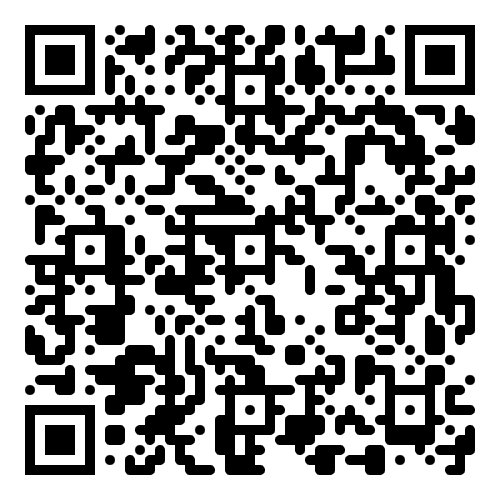-
All Course
- All Course
-
Microsoft
- AZ-104T00-A: Microsoft Azure Administrator
- PL-300T00: Microsoft Power BI Data Analyst
- AZ-900T00: Microsoft Azure Fundamentals
- DP-203T00: Data Engineering on Microsoft Azure
- AZ-500: Microsoft Azure Security Technologies
- AZ-204T00: Developing Solutions for Microsoft Azure
- AZ-305T00: Designing Microsoft Azure Infrastructure Solutions
- AZ-400T00-A: Designing and Implementing Microsoft DevOps solutions
- PL-900T00: Microsoft Power Platform Fundamentals
- DP-900T00: Microsoft Azure Data Fundamentals
- SC-900T00: Microsoft Security, Compliance, and Identity Fundamentals
- MS-900T01: Microsoft 365 Fundamentals
- MB-910T00: Microsoft Dynamics 365 Fundamentals (CRM)
- PL-200T00: Microsoft Power Platform Functional Consultant
- AI-900T00: Microsoft Azure AI Fundamentals
- MS-500T00: Microsoft 365 Security Administration
- PL-400T00: Microsoft Power Platform Developer
- DP-300T00: Administering Microsoft Azure SQL Solutions
- DP-100T01: Designing and Implementing a Data Science Solution on Azure
- MB-300T00 Microsoft Dynamics 365: Core Finance and Operations
-
VMware
- VMware vSphere: Install, Configure, Manage [V8]
- VMware vSphere: Install, Configure, Manage [V7]
- VMware NSX-T Data Center: Install, Configure, Manage [V3.2]
- VMware vSphere with Tanzu: Deploy and Manage [V7]
- VMware vRealize Automation: Install, Configure, Manage [V8.3]
- VMware vSAN: Plan and Deploy [V7]
- VMware Cloud on AWS: Deploy, Configure, Manage 2021
- VMware Tanzu Kubernetes Grid: Install, Configure, Manage [V1.5]
- VMware vSAN: Management and Operations [V7]
- VMware vSphere: Optimize and Scale [V7]
- VMware Horizon 8: Deploy and Manage
- VMware Workspace ONE: Deploy and Manage [V21.x]
- VMware Tanzu Kubernetes Grid: Install, Configure, Manage [V1.3]
- VMware Site Recovery Manager: Install, Configure, Manage [V8.2]
- VMware vSphere: Design [V7]
- Kubernetes Fundamentals and Cluster Operations
- VMware Cloud Director: Install, Configure, Manage [V10.3]
- VMware Tanzu Mission Control: Management and Operations 2022
- VMware vSphere: Troubleshooting [V7]
- VMware NSX Advanced Load Balancer: ICM plus Troubleshooting and Operations Fast Track
-
Cisco
- Cisco Certified Network Associate (200-301 CCNA)
- Implementing and Configuring Cisco Identity Services Engine (SISE) v3.0
- Implementing Cisco Enterprise Network Core Technologies (ENCOR) v1.2
- Implementing Cisco SD-WAN Solutions (ENSDWI) v2.0
- Implementing Cisco Enterprise Advanced Routing and Services (ENARSI)
- Engineering Cisco Meraki Solutions Part 1 (ECMS1) v2.1
- Implementing Cisco Application Centric Infrastructure (DCACI) v1.1
- Introducing Cisco Unified Computing System (DCIUCS)
- Cisco Certified DevNet Associate (DEVASC)
- Implementing Cisco Collaboration Core Technologies (CLCOR)
- Implementing Cisco Enterprise Wireless Networks (ENWLSI) v1.1
- Understanding Cisco Cybersecurity Operations Fundamentals (CBROPS) v1.0
- Designing Cisco Enterprise Networks (ENSLD) v1.1
- Securing Networks with Cisco Firepower Next Generation Firewall (SSNGFW) v1.0
- Understanding Cisco Wireless Foundations (WLFNDU) v1.0
- Implementing Cisco Collaboration Cloud and Edge Solutions (CLCEI)
- Designing Cisco Enterprise Wireless Networks (ENWLSD) v1.1
- Implementing Cisco Data Center Core Technologies (DCCOR) v1.1
- Troubleshooting Cisco Data Center Infrastructure (DCIT) v7.0
- Programming for Network Engineers (PRNE) v2.0
-
AWS
- AWS Certified Solutions Architect - Associate (Architecting on AWS)
- AWS Certified Developer – Associate (Developing on AWS)
- AWS Certified Solutions Architect – Professional ( Advanced Architecting on AWS )
- AWS Certified Cloud Practitioner ( AWS Cloud Practitioner )
- AWS Certified DevOps Engineer – Professional ( DevOps Engineering on AWS )
- AWS Certified Security – Specialty ( Security Engineering on AWS )
- AWS Technical Essentials
- AWS Certified Sysops Administrator - Associate ( Systems Operations on AWS - AWSSYS )
- Exam Readiness: AWS Certified Solutions Architect – Associate
- The Machine Learning Pipeline on AWS
- Advanced Developing on AWS
- Data Warehousing on AWS
- MLOps Engineering on AWS
- AWS Security Essentials
- AWS Business Essentials
- Exam Readiness: AWS Certified Solutions Architect – Professional
- Exam Readiness AWS Certified DevOps Engineer Professional
- Exam Readiness AWS Certified Security Specialty
- Running Containers on Amazon Elastic Kubernetes Service (Amazon EKS)
- Terraform with AWS
-
Oracle
- Oracle Database: Introduction to SQL
- Oracle Database 19C:Administration Workshop
- Oracle Database 19c: Performance Management and Tuning
- Oracle WebLogic Server 12c: Administration II Ed 3
- Oracle WebLogic Server 12c: Administration I Ed 3
- Java Spring Boot
- Oracle Application Express Workshop I Ed 3
- Primavera P6 Professional Fundamentals Rel 19 Ed 1
- R12.2.9 Oracle E-Business Suite Fundamentals
- Oracle Exadata Database Machine: Implementation and Administration
- PeopleSoft PeopleTools Server Admin and DPK Install Ed 1
- Oracle E-Business Suite R12: System Administration
- Oracle Database 12c: Performance Management and Tuning Ed 1
- Oracle Database: Program with PL/SQL
- Oracle Fusion Middleware 11g: Build Applications with Oracle Forms Ed 1
- MySQL Fundamentals Ed 1
- R12.x Oracle Inventory Management Fundamentals
- R12.x Oracle Purchasing Fundamentals
- R12.x Oracle HRMS People Management Fundamentals
- R12.x Oracle HRMS Work Structure Fundamentals
-
CompTIA
- CompTIA-SY0-601-Security+
- CompTIA Network+ (N10-008)
- CompTIA Server+ (SK0-005)
- CompTIA Cybersecurity Analyst (CySA+)
- CompTIA Cloud+ CV0-003
- CompTIA Pentest+ ( PT0-002)
- CompTIA A+ 1101-1102
- PROJECT+
- CompTIA Project+ PK0-005
- CompTIA Linux+ XK0-005
- CompTIA Certified Technical Trainer (CTT+)
- CompTIA Cloud+
- IT Fundamentals+
- CompTIA A+ 1001-1002
- CompTIA Data+ DA0-001
- CompTIA Advanced Security Practitioner (CASP+)(CAS-004)
- CompTIA Cloud Essentials+
- CompTIA Linux+ XK0-004
- CompTIA Pentest+
- CompTIA N+
-
ISACA
- Certified Information Security Manager (CISM)
- Certified Information Systems Auditor-CISA
- CRISC
- Cobit 2019 Foundation
- Certified in the Governance of Enterprise IT (CGEIT)
- COBIT5 Foundation
- COBIT-5-Assessor
- COBIT 2019 Design and Implementation
- IT Risk Fundamentals
- Certificate of Cloud Auditing Knowledge (CCAK)
- Cyber Security Audit
- CSX Fundamentals
-
AXELOS
- ITIL® 4 Foundation
- PRINCE2® 6th Edition Foundation & Practitioner
- ITIL® 4 Digital and IT Strategy
- ITIL® 4 Specialist Create, Deliver and Support
- PRINCE2® 6th Edition Foundation
- PRINCE2® Agile Foundation
- ITIL® 4 Strategist: Direct, Plan, and Improve
- PRINCE2® Agile Foundation and Practitioner
- PRINCE2® agile practitioner
- ITIL® 4 managing professional transitions
- ITIL 4 Specialist: Acquiring & Managing Cloud Services
- ITIL v3 Intermediate Insights
- ITIL Management workshop
- ITIL 4 Specialist: Sustainability in Digital & IT
- ITIL® 4 Specialist Drive Stakeholder Value
- ITIL® 4 Specialist High-velocity IT
- PRINCE2® 6th Edition Practitioner
- ITIL® V3 Foundation
- ITIL® Managing Across Lifecycle
- ITIL® OSA Capability Stream
-
EC-Council
- Certified Ethical Hacker v12 - CEHv12
- Certified Ethical Hacker V11 -CEH-v11
- Certified Penetration Testing Professional - CPENT
- EC-Council Certified Incident Handler (ECIH V2)
- Certified Threat Intelligence Analyst (CTIA)
- Certified SOC Analyst-CSA
- ICS/SCADA Cybersecurity
- CND V2
- Certified Application Security Engineer JAVA
- Certified Application Security Engineer .NET
- CHFI V10
- EC-Council Certified Security Specialist (ECSS)
- EC-Council Certified Encryption Specialist -ECES(PKI)
- Computer Forensics Fundamentals
- Web Application Hacking and Security (WAHS)
- Certified Cloud Security Engineer (C|CSE)
- Certified Secure Computer User (CSCU)
- Certified advanced Penetration Tester
- Certified Blockchain Professional
- EC-Council Disaster Recovery Professional v3
-
(ISC)2
- Certified Information Systems Security Professional (CISSP)
- Systems Security Certified Practitioner (SSCP )
- Certified Cloud Security Professional (CCSP)
- Certified Secure Software Lifecycle Professional (CSSLP)
- CISSP-ISSAP
- CISSP-ISSMP
- Certified in Cybersecurity
- CISSP-ISSEP
- HCISPP
- Certified Authorization Professional (CAP)
-
PECB
- ISO 27001 (ISMS) Lead Implementer
- Certified Data Protection Officer : CDPO (includes GDPR)
- ISO 31000 Lead Risk Manager
- ISO 22301 (BCMS) Lead Implementer
- ISO 27001 (ISMS) Lead Auditor
- ISO 37301 Lead Auditor
- ISO 9001 (QMS) Lead Auditor
- ISO 55001 Lead Auditor
- ISO 27701 Lead Implementer
- ISO/IEC 27001 Foundation
- ISO 22301 (BCMS) Lead Auditor
- ISO 9001 (QMS) Lead Implementer
- ISO/IEC 20000 (ITSM) Lead Implementer
- ISO 20000 (ITSM) Lead Auditor
- ISO 55001 Asset Management Lead Implementer
- ISO 50001 Lead Auditor
- ISO 21001 Lead Auditor (EOMS)
- ISO 38500 Lead IT Corporate Governance Manager
- ISO 26000 Introduction
- ISO 28000 Lead Implementer
-
PMI
- Project Management Professional (PMP)® Certification Prep
- PMI Scheduling Professional (PMI-SP)
- Program Management Professional (PgMP)®
- PMI Agile Certified Practitioner (PMI-ACP)® (3 days)
- Certified Associate in Project Management (CAPM)® Certification Prep
- Portfolio Management Professional (PfMP)
- PMI-RMP Exam Prep
- PMI Professional in Business Analysis (PMI-PBA)® (5 days)
- Disciplined Agile® Scrum Master (DASM)
- Citizen Developer Business Architect (CDBA)
- Citizen Developer Practitioner (CDP)
- Agile Metrics Micro-Credential (AM-MC)
- Agile Hybrid Project Pro (AHPP)
- PMI Project Management Ready™
- Disciplined Agile® Value Stream Consultant (DAVSC)
- Disciplined Agile® Coach (DAC)
- Disciplined Agile® Senior Scrum Master (DASSM)
- Project Management for Software Development
- Understanding Project Budget and Accounting
- Project Portfolio Management
- PostgreSQL
-
Red Hat
- Red Hat System Administration I (RH124)
- Red Hat System Administration II (RH134)
- Red Hat Satellite 6 Administration (RH403) – Version 6.6
- Advanced Automation: Ansible Best Practices (DO447)
- RHCSA Rapid Track (RH199) – RHEL 9
- Red Hat System Administration III: Linux Automation (RH294) – RHEL 9
- Red Hat System Administration II with RHCSA Exam
- Red Hat JBoss Application Administration I (AD248)
- Red Hat OpenShift Administration II: Operating a Production Kubernetes Cluster
- Ansible for Network Automation
- Cloud Storage with Red Hat Ceph Storage (CL260)
- Developing Event-Driven Applications with Apache Kafka and Red Hat AMQ Streams
- Red Hat OpenStack Administration II: Day 2 Operations for Cloud Operators (CL210)
- Red Hat OpenStack Administration I: Core Operations for Domain Operators (CL110)
- Red Hat Ceph Storage Architecture and Administration (CEPH125)
- Containers, Kubernetes, and Red Hat OpenShift Administration II (DO285)
- Red Hat Security: Linux in Physical, Virtual, and Cloud
- Red Hat Security: Identity Management and Active Directory Integration (RH362)
- Red Hat CloudForms Hybrid Cloud Management
- Red Hat Virtualization (RH318)
-
BCS
- ISTQB-BCS Certified Tester Advanced Level Technical Test Analyst(CTAL-TTA)
- BCS - ISTQB Certified Software Tester
- Certificate in Information Security Management Principles (CISMP)
- ISTQB-BCS Certified Tester Advanced Level Test Manager(CTAL-TM)
- Professional Certificate in Team Leadership
- ISTQB - Certified Tester Expert Level - Test Management
- ISTQB® Certified Tester Foundation Level: Usability Testing
- ISTQB-BCS Certified Tester Advanced Level Test Analyst(CTAL-TA)
- BCS Foundation Certificate in Data Protection
- BCS Foundation Certificate in User Experience
- BCS Practitioner Certificate in Data Management Essentials
- IS Project Management
- Software Asset Management Essentials
- Modelling Business Processes
- Benefits Management and Business Acceptance
- BCS Practitioner Certificate in Business Analysis Practice
- BCS Foundation Certificate in Organisational Behaviour
- BCS Foundation Certificate in Business Change
- Business Analysis Foundation
- BCS Practitioner Certificate in Requirements Engineering

